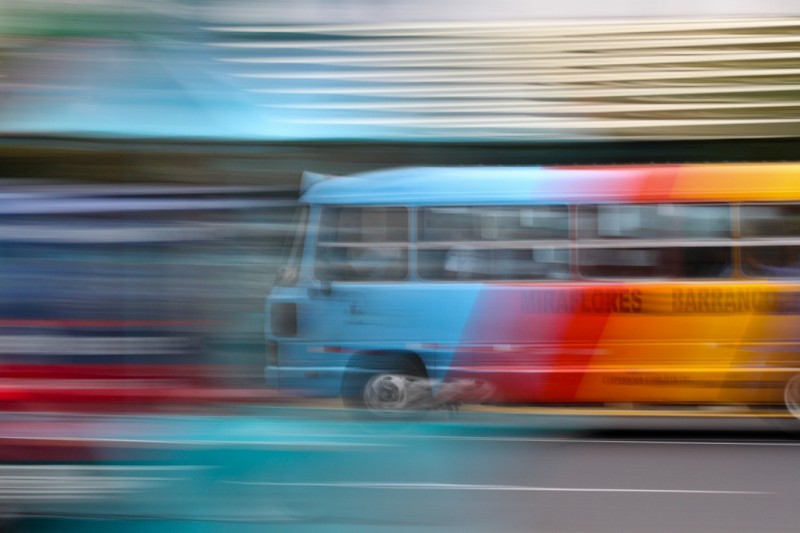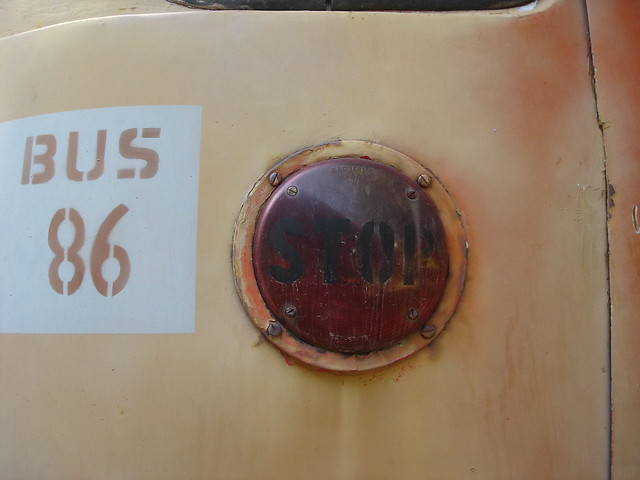South America is an amazing continent in so many ways. It boasts a vast array of indigenous cultures, an incredible depth of history and some of the most stunning natural scenery you will ever see. It is also huge. Seeing it all, or even a small part of it, is no minor undertaking for the budding vagabond, so unless you want to spend half your time stopping over in a series of anonymous airports, you need to get familiar with South America’s extensive bus network.
Vagabondish is reader-supported. When you buy through links on our site, we may earn a small affiliate commission. Read our disclosure.
Bus is the chosen mode of long-distance travel for almost everyone in South America. There are few public rail routes these days, and while companies such as SKY are slowly introducing the concept of cheap airlines, flights are still beyond the budgets of many natives and backpackers. Besides, what’s the rush? Life in South America is slower than in many parts of the world, so why not travel accordingly?
Getting Started: Booking Your Bus
While the bus infrastructure in South America is generally reliable, it’s not as organized as you might expect in Europe or the States. Each company basically works independently, and very few allow you to book online. This means the best (and often only) way to reserve your seat is to get down to the local bus station. Depending on the size of the station, you might find yourself confronted with counters for up to 20 different companies, each offering a different selection of routes, times and prices. The sheer scale and bustle of the operation may seem daunting at first, but fear not!
Start by taking a look at the signs and set-ups of the different companies to get an idea of what’s in your price range. Once you’ve selected a victim, head to the desk and see if you can find out availability and prices. A little of the local language is useful here, but don’t worry if you haven’t mastered it — the art of “finger miming” worked just as well for me.
Take the time to shop around until you find something that both you and your wallet feel comfortable with, but try not to be too restrictive with your funds at first. You’ll probably be sitting on these buses for a long time, and striking the right balance between your budget and your butt is something of a trial-and-error process.

The Bus to Barranco, Lima, Peru © Geraint Rowland
Seating and Sleeping: Avoiding the Semi-cama Coma
Chances are your journey will take several hours — maybe more than a day — and at some point you’re likely to be on an overnight route. These generally come with a choice of seat type: cama or semi-cama. Each company seems to have its own take on what those terms mean, but the upshot is: to sleep or not to sleep?
It’s worth shelling out for cama, especially considering the money you’re saving on accommodation anyway.
Cama seats are usually akin to deluxe cinema chairs with (almost) full reclining abilities. At their best, they’re comfortable, supportive and a better night’s sleep than the beds in many hostels.
Semi-cama seats — the cheaper option — are, as the name suggests, only halfway there (if that). Generally quite rigid and not all that cozy, they’re fine for daytime trips, but you can forget sleeping in them, especially if you’re someone who needs quite a bit of legroom.
If you want to avoid spending the next day wandering around your new city like a cramped, hunched-over zombie, it’s worth shelling out for cama, especially considering the money you’re saving on accommodation anyway.
Food
The quality and availability of food on long-distance bus journeys in South America varies wildly. Some companies will offer a choice of pretty passable hot dinner options plus breakfast the next morning; with others you’ll be lucky to get a coffee.
It’s best to research what’s on offer in advance, but even if you end up stranded without supplies, don’t worry. Buses without meal services often make pit stops in small towns and let some of the locals board to flog empanadas and other assorted goodies. This is a good option if your service doesn’t include hot food, especially if you develop an aversion to the wall-to-wall sweetened cheese, ham and mayo sandwiches that pass for catering on many buses. They may seem OK at first, but after a few weeks they can reduce even the most hardened traveler to tears! General precautions about buying from street vendors obviously apply here, but I never had any trouble.

Bus, Bolivia © Michael Fernando Jauregui Schiffelmann
Entertainment
On some buses, the journey itself is all the entertainment you’ll need. The 10-hour ride from Salta, Argentina to San Pedro de Atacama, in the north of Chile, is thought by many to be the most beautiful bus journey in the world, taking you through multi-colored mountains, vast salt plains and into the heart of the world’s driest desert. Quite often, you can even take in the view from the panoramic front window on the top deck, as many locals seem to have a fear of sitting there, meaning the seats are readily available.
Otherwise, you’re at the mercy of the crew here. As the Rough Guide to South America says, “”¦ your biggest worry will be what video the driver or conductor has chosen.” This is probably meant as a positive, but while some of the films we saw were perfectly passable (save for the odd appearance by Jennifer Aniston), others were downright harrowing. These ranged from incomprehensible time travel/revenge B-movies to one without subtitles that ended with everyone committing some sort of apocalyptic ritual mass suicide. And a quirky little number about a man whose only friends are stuffed dead mice. Arm yourself with earplugs and a sleeping mask if you intend to survive the night unscathed.
Some bus companies take a more interactive approach: on one line, after being subjected to an hour of commercials blaring from the screens, we were nearly harangued by our stewardess into a game of bingo. Different cultures clearly have different ideas of customer service, but the last thing I wanted after struggling through the day on a monster hangover was a high-volume test of my Spanish number skills. Still, it beat the train journey back from Machu Picchu where, having settled down for a little doze after 4 days’ hard trekking, we were rudely awakened half an hour later by pounding bongos and the sight of a steward in full “indigenous” attire and mask doing a sort of tribal dance!
Experiences like that can be hard work after a few weeks on the road. But they’re also part of the joy of travelling — no-one wants to go visit a far-off land only to find that everything there is as boring and predictable as it is back home. Bus journeys in South America certainly have their downsides, but on the whole they’re a thrilling and integral part of the adventure — a great way to meet locals and take in the amazing scenery while you move from place to place.
5 Things to Remember When Travelling by Bus in South America:
- Keep your passport handy — you’ll probably be asked for it when both booking and boarding the bus.
- Make sure you have enough cash (and a money belt) on you — desks at bus terminals don’t accept credit cards and the local food vendors certainly won’t. Just make sure you keep it safe, especially when you’re asleep!
- Earplugs/face mask/sleeping pills — whatever you need to block out the world around you and drift off into slumber.
- Music/reading material — take a book and make sure your mp3 player is charged, otherwise you might find yourself in a hell of bizarre, obscure cinema rejects.
- Food and drink supplies — it never hurts to be kitted out, especially in case you break down or the air-con gives up the ghost.



